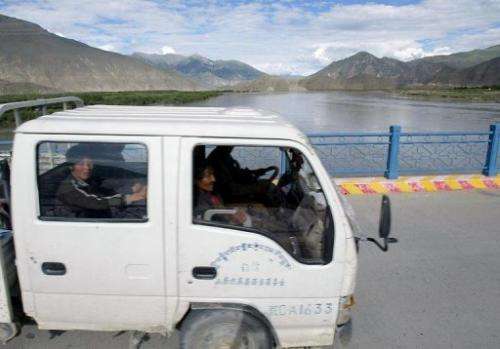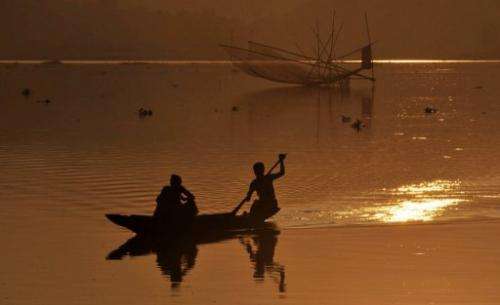River flowing from China dries up in India: lawmaker

A major river in India's northeast that originates in Tibet has suddenly dried up, triggering speculation that China might be responsible, a local official told AFP on Thursday.
The Brahmaputra has its source in China's southwestern Tibet region where it is known as the Yarlung Tsangpo, and it enters India in the mountainous, remote northeastern state of Arunachal Pradesh, where it it is called the Siang.
The 1,800-mile (2,900 kilometre) river then descends into the plains of adjoining Assam state, where it is vital for agriculture, and ends in Bangladesh in the Bay of Bengal.
"It was shocking to find the Siang river drying up and patches of sand visible on its bed in a very large stretch close to Pasighat town," local state lawmaker Tako Dabi told AFP by telephone, referring to a town in East Siang district.
"We suspect the sudden drying up of the Siang could be a result of China either diverting the river water on their side or due to some artificial blockades somewhere in the upper reaches," added Dabi, an advisor to the state's chief minister.
He estimated the flow was about 40 percent of its normal strength.
Video footage from the scene shows the Siang -- which is normally a gushing torrent several kilometres (miles) wide at Pasighat, according to Dabi -- reduced to flowing in narrow channels in the large sandy riverbed.

"Locals are worried as the river is a source of livelihood," Dabi added.
The problem with the river came on the day the Chinese Foreign Minister Yang Jeichi held talks in New Delhi with his Indian counterpart S.M. Krishna.
India is extremely nervous about the danger of its giant northern neighbour diverting rivers that originate in Tibet and flow into India, or disrupting their flow with hydroelectric plants.
The two countries have held frequent talks about the issue at the highest level and Indian Premier Manmohanh Singh assured as recently as last August that there was no danger.
"We have been assured that nothing will be done which affects India's interests adversely," Singh told the upper house of parliament.
Energy-hungry and water-deficient China is building a hydroelectric plant on the Yarlung Tsangpo, but the Indian government says it has been assured this is a "run-of-the-river" project rather than a dam which would disrupt the flow.
"Our satellite pictures convey that no such activity of any storage facility is being worked out by the Chinese authorities," Krishna told reporters on Thursday after his talks with his Chinese counterpart.
He said that in light of the media reports about the river's flow, "we will get our ambassador (in Beijing) to check it."
India and China have decided that 2012 will be the "India-China year of Friendship and Cooperation" in a bid to overcome mutual mistrust and suspicion that continues to bedevil their relations.
The two Asian giants have an unresolved border dispute that was the cause of a brief but bloody war in 1962.
China claims almost all of Arunachal Pradesh as its own territory.
(c) 2012 AFP



















